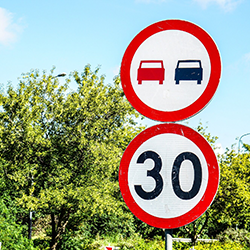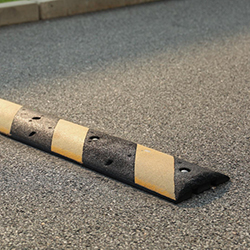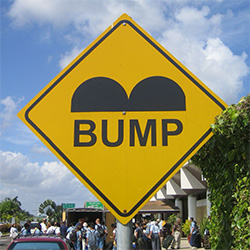Drainage Considerations for Speed Bumps
Importance of Proper Water Drainage
Effective water drainage is crucial for the longevity and functionality of speed bumps. Inadequate drainage can lead to water pooling, which not only deteriorates the speed bump material but also poses a hazard to vehicles and pedestrians. To prevent such issues, consider the following points:- Ensure that the design of the speed bump allows water to flow to the sides rather than accumulating on the surface.
- Regular inspection and maintenance are necessary to keep the drainage channels clear of obstructions.
- Installation should be coordinated with existing drainage systems to optimize water flow and prevent back-ups.
Understanding the Basics of Speed Bumps
Speed bumps and speed humps are traffic calming measures designed to slow down vehicles on roads, particularly in residential areas or near schools. Speed bumps are often confused with speed humps, but they serve slightly different purposes and have distinct characteristics.
- Speed bumps are typically shorter in length and have a more abrupt elevation, requiring drivers to reduce speed significantly to pass over them comfortably.
- Speed humps, on the other hand, are generally longer and have a more gradual rise, allowing vehicles to maintain a slightly higher speed while still reducing velocity.
The Impact of Low-Profile Speed Bumps on Road Safety
Low-profile speed bumps play a crucial role in enhancing pedestrian safety by acting as a physical reminder for drivers to slow down, particularly in areas where foot traffic is high. These installations are especially beneficial near schools, parks, and residential areas where children and families are often present.
- They create a visual and physical cue that encourages drivers to reduce speed.
- Pedestrians benefit from shorter crossing distances and lower risk of accidents.
- The presence of speed bumps has been shown to increase driver awareness and caution.
Understanding Low-Profile Speed Bumps
Defining Low-Profile Speed Bumps
Low-profile speed bumps are a type of traffic calming device designed to reduce vehicle speeds without causing significant discomfort to drivers or damage to vehicles. Unlike their more aggressive counterparts, these speed bumps have a gradual incline and a lower height, making them less intrusive while still effective. Continue reading “Understanding Low-Profile Speed Bumps” »Exploring Speed Humps: Design and Functionality
The Design Features of Speed Humps
Speed humps are engineered with a more gradual slope than speed bumps, allowing for a smoother transition for vehicles. Their elongated design is intended to reduce vehicle speeds over a longer distance without causing significant discomfort to drivers or passengers. Continue reading “Exploring Speed Humps: Design and Functionality” »Understanding Speed Bumps: Characteristics and Usage
Defining Speed Bumps and Their Dimensions
Speed bumps are raised areas of pavement typically designed to slow down vehicles on roadways. They are often installed in residential areas, parking lots, and near schools to ensure pedestrian safety. The dimensions of speed bumps can vary, but they generally range from two to six inches in height and one to three feet in width. The height of the bump plays a crucial role in its effectiveness, as higher bumps force drivers to reduce their speed more significantly to avoid discomfort or vehicle damage. Continue reading “Understanding Speed Bumps: Characteristics and Usage” »Revolutionizing Speed Control with Aesthetic Appea
In the realm of traffic control, the yellow sectioned rubber speed bump is not just a tool for safety; it’s a statement of style. The vibrant yellow hue and sleek sectional design merge functionality with a modern aesthetic, transforming mundane streets into visually appealing pathways.
- Safety: The primary purpose of speed bumps is to slow down traffic, ensuring pedestrian and vehicle safety.
- Style: The unique color and design contribute to the visual appeal of the streetscape.
- Integration: These speed bumps blend seamlessly with various urban designs, enhancing the overall look of the environment.
Guard Your Ground
Our rubber speed bumps are engineered to withstand the rigors of diverse environmental conditions. Constructed from high-grade, weather-resistant rubber, these speed bumps maintain their integrity and function across a spectrum of temperatures and weather patterns.
Continue reading “Guard Your Ground” »
Maximize Safety and Aesthetics
Our premium rubber speed bumps feature a distinctive dual-color design, which not only enhances their aesthetic appeal but also significantly boosts visibility. The contrast between the two colors makes the speed bumps stand out, ensuring that they catch the attention of drivers both during the day and at night.
Continue reading “Maximize Safety and Aesthetics” »










